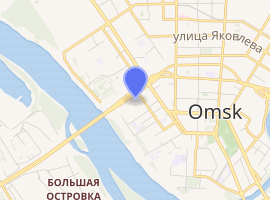Omsk State University
Omsk F. M. Dostoevsky State University (Омский государственный университет им. Ф. М. Достоевского), usually referred to as Omsk State University (Омский государственный университет) (OmSU) was founded in 1974 in the city of Omsk, Russia. The two original departments (Humanities and Science) and 40 professors have grown to 13 departments and a 900-member faculty. The university has graduated more than 10,000 students and maintains ties with universities in The UK, Germany and the USA.
Омский государственный университет им. Ф. М. Достоевского | |
| Established | 1974 |
|---|---|
| Rector | Jakub Aleksei Valer'evich |
Academic staff | 900 |
| Students | 13000 |
| Undergraduates | 3600 |
| Location | , , Russian Federation |
| Language | Russian English |
| Website | (in Russian) omsu (in English) omsu |
Building details | |
 | |

| |
OmSU Departments
The university has 13 departments:
- Economics
- Law
- Philology and Media Communications
- History
- Mathematics
- Computer Sciences
- Physics
- Chemistry
- International Business
- Foreign Languages
- Culture and Art
- Psychology
- Social and Humanitarian Studies
Campus
The university has nine main buildings. Among these are two nine-story dormitory towers, mostly with two or three students sharing a room. These dormitories possess laundry facilities, pay phones, TV lounges and game rooms. Self-catering rooms provide facilities for communal cooking and dining.
The campus includes photocopy offices, a book store, libraries, learning rooms, computer laboratories, a health center, a playground, two gyms, cafeterias and canteens, a large conference hall.
The library maintains subscriptions to many subject-specific periodicals as well as to daily and weekly newspapers both from Russia and from abroad. Study rooms are included on the library's premises and computer labs in areas designated by each department are widely used by both students and faculty to read for classes and exams, to write articles, essays and coursework, and to rehearse presentations. Networked computers provide free Internet and e-mail access.
The university publishes several newspapers, giving insight into campus life and keeps students informed about social and sports events. Both students and faculty contribute to the papers.
The Publishing Department and the Scientific-Educational Fund (NOF) both publish research and literature. NOF is in charge of organising preparatory courses and administering tests for high school students and applicants.
In addition to full-time students, the university operates continuing education programs in several departments.
University publications
- Herald of Omsk University (Вестник ОмГУ) - journal
- Istoricheskii ejengodnik (Исторический ежегодник) - journal
- Omskii universitet (Омский университет) - newspaper
- Istochnik (Источник) – a publication for Orthodox students
- Filin (Филин) – a publication of the Department of Philology
- Pilgrim (Пилигрим) – literary journal
Notable alumni and faculty
- Sergey Baburin - former Dean of Law
- Herman Gref - Minister of Economic Development and Trade, CEO of Sberbank
- Siman Povarenkin - businessman and owner of GeoProMining
- Davaajantsangiin Sarangerel - Mongolian journalist and politician
References
External links
- (in Russian) Official
- (in English) International Projects Department